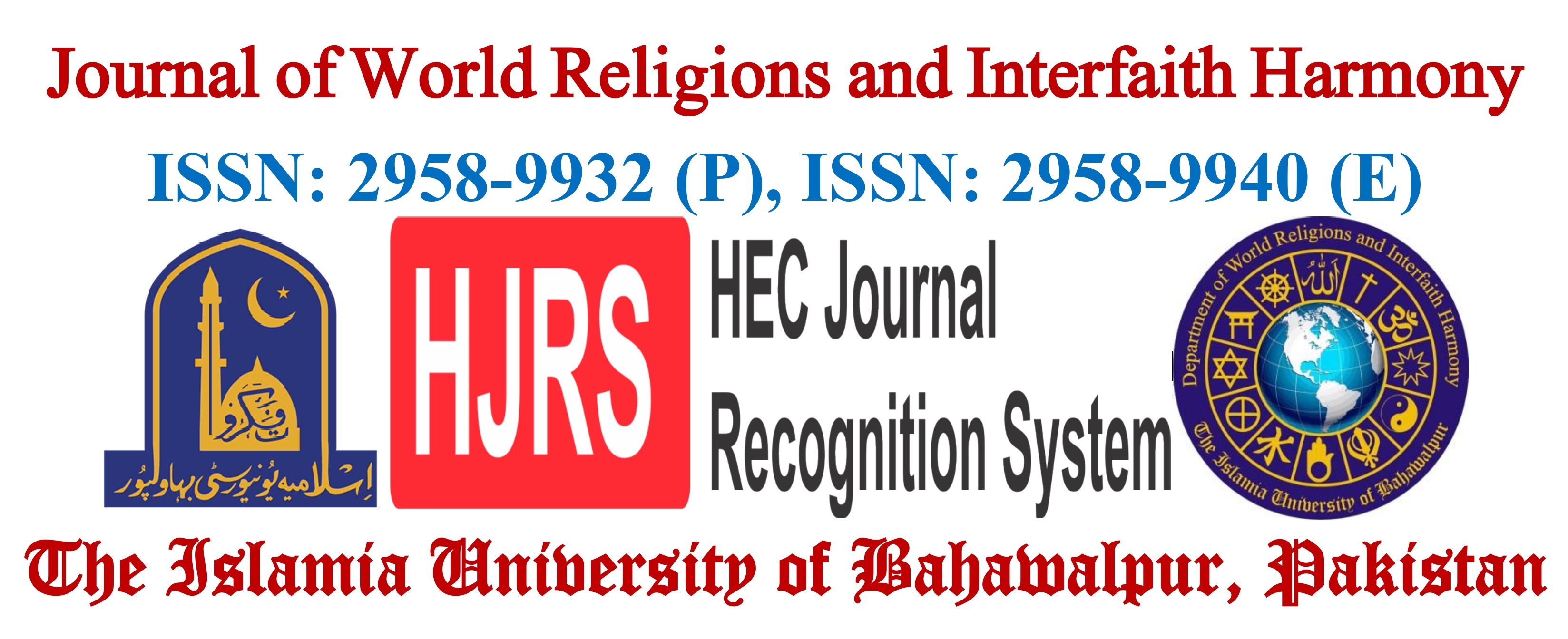A Review of Opinions of Scholars on Contemporary Issues and Future Plans for Interfaith Harmony
DOI:
https://doi.org/10.52461/jwrih.v2i1.1750Keywords:
World Religions, Quran and Sunnah, Interfaith Harmony, Peaceful Coexistence, PakistanAbstract
Interfaith harmony refers to the peaceful coexistence and cooperation between people of different religious beliefs. This abstract focuses on the need for interfaith harmony, the challenges that hinder it, and the way forward towards achieving it. The need for interfaith harmony arises from the diversity of religious beliefs and practices around the world, which can lead to misunderstanding, conflict, and violence. Interfaith harmony promotes mutual respect, understanding, and cooperation among people of different faiths, which can lead to a more peaceful and just society. However, achieving interfaith harmony is not without challenges. These challenges include ignorance, prejudice, fear, and mistrust among people of different faiths. There are also social, economic, and political factors that can contribute to the breakdown of interfaith relations. To overcome these challenges, there are several ways forward towards achieving interfaith harmony. These include education and awareness-raising initiatives that promote interfaith understanding and dialogue. There are also interfaith organizations that bring people of different faiths together for mutual cooperation and support. Additionally, there are political and legal measures that can protect the rights of religious minorities and ensure their full participation in society. In conclusion, interfaith harmony is essential for building a peaceful and just society. While there are challenges to achieving it, there are also ways forward towards promoting interfaith understanding, cooperation, and respect.
Downloads
Published
How to Cite
Issue
Section
License
Copyright (c) 2023 Asma Abdul Sattar

This work is licensed under a Creative Commons Attribution-NonCommercial 4.0 International License.






